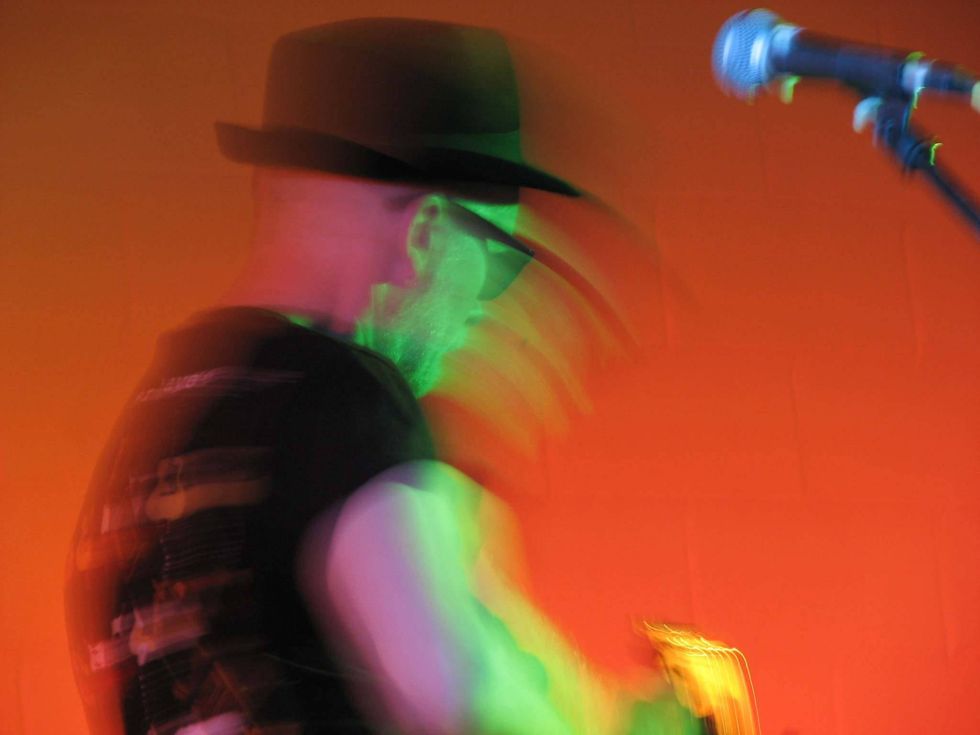As an electric guitarist, you likely love tubes. But you probably hate them too! The magic bounce, compression, and grind that tubes produce form the tonal foundation for almost every great electric guitarist—past and present. Yet with so much confusion and misinformation, tubes can be a daunting subject for even the most experienced guitarists.
Tubes can and do wear out and fail, which can wreak havoc on your gigs and sessions. I'll attempt to shed some light on these mysterious glass bottles and offer some tips on how to keep your amp rocking when you run into tube-related issues. But remember, I’m not an amp tech: This advice comes solely from my experience as a player.
Tube types. First, let’s look at some different types of tubes. Most tube amps need multiple preamp tubes to perform various functions. And most use 12AX7 (aka ECC83) preamp tubes. Other amps use 12AU7 or 12AT7 tubes, which are similar to the 12AX7 but have lower gain.
When it comes to power tubes, many U.S. amp companies (Fender and Mesa/Boogie, for example) use either 6L6s or 6V6s. The 6L6 is known for having full, round, and clear tone that stays big and clear even when pushed. Though 6V6 tubes share some tonal similarities with 6L6s when run clean, 6V6s will break up sooner and tend to grind more when pushed. Marshall amps are famous for using EL34s for their signature midrange crunch, while the Vox AC30 uses EL84 tubes. EL84s are low-power tubes that quickly compress and distort. That’s part of their tonal signature, and guitarists from Brian May to the Edge have created a number of epic tones using amps with EL84 tubes.
Most of the electronics world moved from tubes to transistors in the late 1960s, and the tube market shrank dramatically. The only remaining folks who really needed tubes were audiophiles and musicians. Most aficionados would probably agree that the best tubes were made from the 1950s to the 1980s by Mullard, RCA, Siemens, Telefunken, Sylvainia, Amperex, and others. Tubes from these manufacturers can still be found, but in very short supply. Because they were manufactured years ago, that’s why they are referred to as new-old-stock (NOS). Tube manufacturing factories in countries like England, Germany, Holland, and the U.S. are long since closed, and almost all tubes made today are manufactured in Russia, China, or Slovakia.
Peter Thorn’s “New Production” Tube Picks
EL34: I use and recommend JJ EL34s. They have good tone and are fairly reliable. I also like the GT-EL34M.
6L6: I run TAD 6L6GC-STR tubes in my ’66 Fender Bassman. It’s a very nice tube.
6V6: I use the JJ 6V6 in my Jim Kelley Reverb head. They are known as one of the best sounding and most robust 6V6 tubes.
EL84: JJ EL84s have good tone, although they are somewhat spotty when it comes to reliability. Sovtek EL84s provide decent tone and are quite reliable.
12AX7: I mainly use 12AX7s made in China, though I like the Sovtek 12AX7LPS in the phase inverter position on some amps. The JJ ECC83 is useful for taming overly bright amps.
NOS vs. new. A few dealers, such as KCA NOS Tubes, specialize in NOS rarities, but these days outfitting your amp with all NOS tubes could cost as much as the amp itself! Most of us working guitarists simply can’t afford to do this. However, using a good NOS preamp tube in the crucial V1 position of your amp can provide a tonal improvement that won’t break the bank. I recommend picking up a couple of choice NOS preamp tubes to experiment with. My favorites—especially for Marshall-type circuits—are old 12AX7s from Mullard, Amperex Bugle Boy, and RFT.
While it’s generally accepted that they don’t make them like they used to, there’s also a lot of hype surrounding the NOS-versus-new tube debate. Many new tubes sound just fine, and some of them are actually very good. Buying from reputable dealers that match and test their tubes is imperative, however, because inconsistencies from batch to batch occur frequently.
I often see forum posts saying things like, “Ruby Tubes are the best!” or “Groove Tubes are the only way to go.” The truth is, companies like Ruby Tubes and Groove Tubes are essentially tube dealers, testers, and re-branders—not manufacturers. In other words, they buy large quantities of tubes produced by companies such as Shuguang in China or JJ Electronic in Slovakia, and they test and re-brand them. Re-branders will sometimes work with tube manufacturers to produce exclusive designs, but the tubes are still always manufactured by one of the overseas tube factories.
When it’s time to re-tube. Some amps are self-biasing. Also called cathode bias amps, examples include the Vox AC30, some Bad Cat and Matchless models, and Suhr Badger amps. This obviously makes changing out power tubes much easier—there’s no need to take the amp to a tech or re-bias. Check with the manufacturer first to see if your amp is a cathode bias design. Most amps will need to be biased by a qualified amp technician when re-tubing.
When buying a set of power tubes for your amp, I recommend buying two sets that are matched to the same spec—if you can afford it. It can be pricey, but you’ll have an extra set you can drop in your amp should you suffer a power-tube failure. When I’m heading out on tour, the guys at Suhr always set me up with an extra set of matched tubes for each of my PT100 amps. They are perfectly matched to the set in each amp, so I can re-tube on tour without a re-bias.
One last bit of advice: If you use an attenuator, remember that running your amp hard will wear out your power tubes (and phase inverter tube) much faster. So be prepared to re-tube more often.
Until next time, enjoy your tube amps and rock on!



















